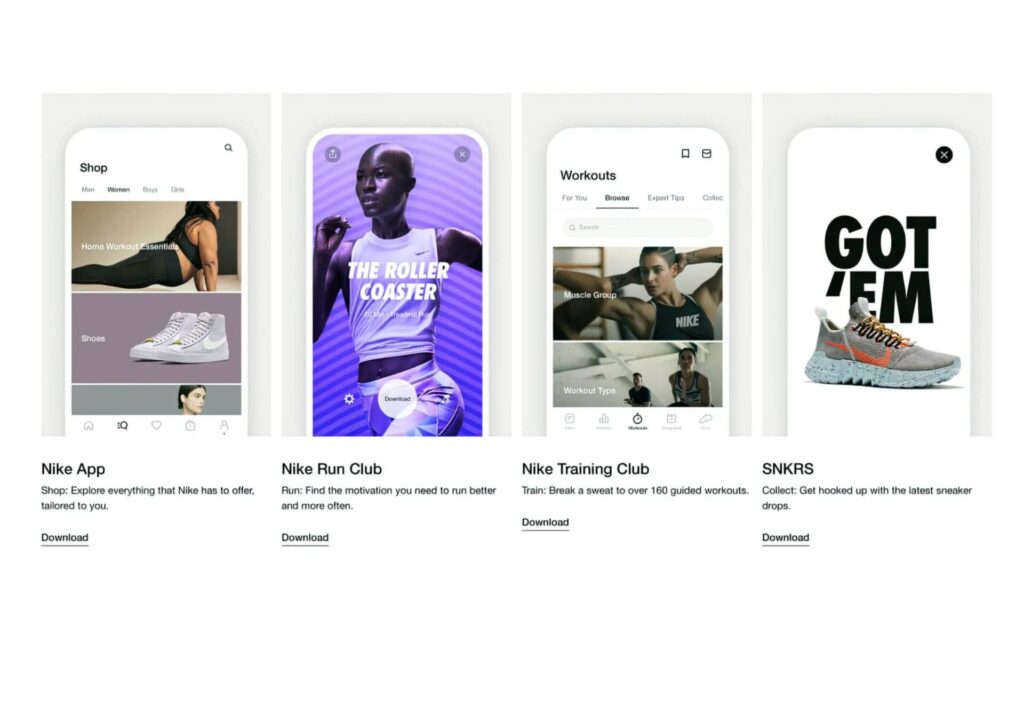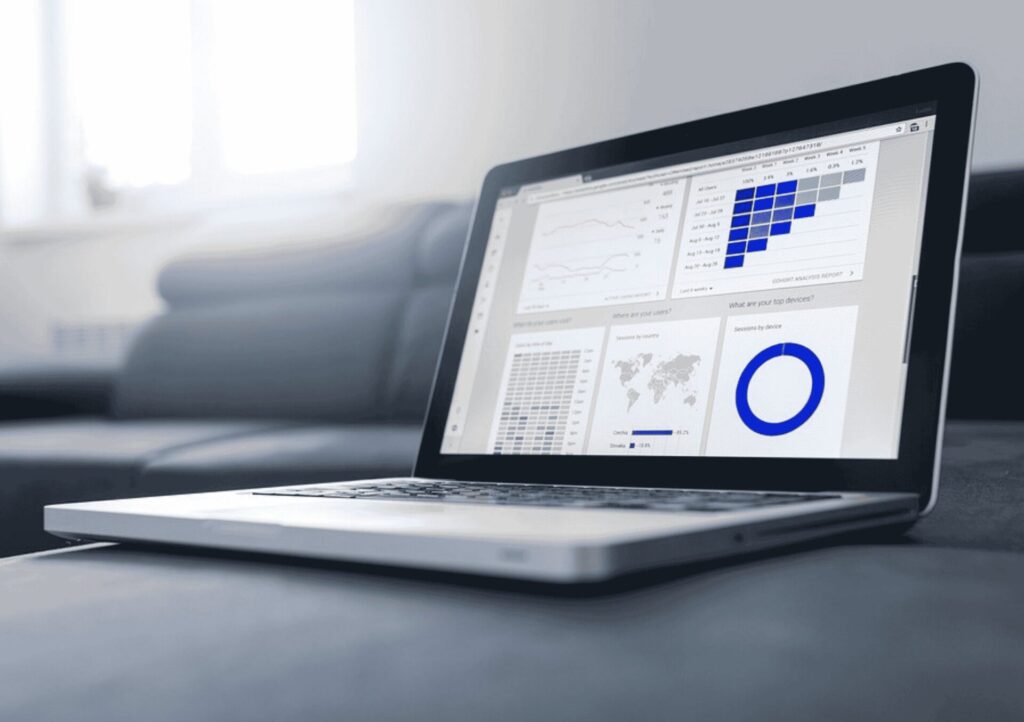A McKinsey survey shows that omnichannel shoppers buy 1.7 times more often than those who stick to a single channel—and they usually spend more per purchase. To meet customers wherever they are, omnichannel eCommerce is now a go-to for brands looking to build a fluid shopping experience.
Building an omnichannel eCommerce experience is unifying all channels into one seamless journey, removing any gaps when customers switch platforms and ensuring a smooth, consistent experience wherever they shop.
But what makes it so-called a game-changer, and does your business really need this to grow? This blog will guide you to:
- Understand different eCommerce channel types (single, multi, cross and omni)
- Learn how omnichannel boosts customer satisfaction, loyalty, and sales
- Build a strong omnichannel strategy with key components
- Gain insights from real-world successful examples
Let’s start!
What is Omnichannel eCommerce?
Omnichannel eCommerce is a retail strategy that offers customers a seamless and unified shopping experience across all sales channels and touchpoints— including in-store kiosks and online platforms. (like marketplaces, websites, social media, mobile apps, phone, and email)
For example, a customer might browse online, order through an app, and pick up in-store—creating a seamless experience at every step. This approach enhances satisfaction, simplifies sales, and builds loyalty by meeting customers wherever they choose to shop.
The Difference Between Single-channel, Multi-channel, Cross-channel and Omnichannel in eCommerce
In eCommerce, businesses can choose different channel strategies—single, multichannel, or omnichannel—to meet their goals. Understanding the distinctions between these is vital for optimizing resources and achieving objectives like customer experience enhancement and sales growth.
- Single-channel eCommerce relies on one platform, like a website or physical store, to reach customers. It’s simple but has limited reach.
- Multi-channel eCommerce expands reach by using multiple, separate platforms (e.g., website, app, social media), though they often operate independently, which can create fragmented customer experiences.
- Cross-channel eCommerce connects different sales channels, letting customers move smoothly from one to another (like browsing an email promotion then completing the purchase on the website). It creates a more connected shopping journey without full integration across platforms.
- Omnichannel eCommerce integrates all channels effortlessly providing a consistent, unified experience. Customers can transition across platforms easily, such as browsing online and picking up in-store, which boosts satisfaction and loyalty.

Why is Omnichannel eCommerce Essential for Modern Businesses?
With 73% of shoppers using more than one channel, other brands can easily “grab” your customers. Giving them a simple, connected experience across all devices helps keep them with you, making it less likely they’ll go elsewhere.
Standout Benefits of Omnichannel eCommerce
- Enhanced customer experience: Omnichannel ensures a seamless shopping experience across all platforms, helping customers switch between devices or in-store visits effortlessly. This alignment increases satisfaction and encourages brand loyalty.
- Increased sales and conversions: By providing multiple touchpoints, omnichannel eCommerce makes it easier for customers to purchase on their preferred platform, which can drive more conversions and sales.
- Better data insights: Tracking customer behavior across channels provides valuable insights that inform personalized marketing strategies, improving targeting and campaign effectiveness.
- Stronger customer loyalty: Consistent engagement across multiple marketing channels fosters trust and loyalty, making it more likely that customers will return.
- Competitive advantage: As more consumers expect an omnichannel experience, brands that offer it can stand out, meeting demands for flexibility and convenience in shopping.
3 Examples of Successful Omnichannel eCommerce Implementation
1. Nike

Nike connects online and offline experiences by enabling customers to use the Nike app to locate items in nearby stores, check stock, or even reserve products for in-store pickup. Additionally, the app allows customers to personalize products, track purchases, and access exclusive content, making every interaction consistent across platforms. Nike’s approach not only streamlines the customer journey but also fosters loyalty by providing a unique, personalized shopping experience that meets customers.
2. Starbucks

Starbucks also unites online and in-store experiences through the Starbucks app, which allows customers to order ahead, customize drinks, and pay seamlessly. This approach extends to rewards; customers can accumulate points and redeem perks across channels, maintaining a unified loyalty experience. By integrating mobile orders with physical locations, Starbucks ensures convenience, enhances customer satisfaction, and increases repeat visits.
3. Sephora

Sephora customers enjoy a fully integrated shopping experience, where online and in-store services blend seamlessly. The Sephora app lets users book in-store appointments, review purchase history, and try virtual makeup applications, ensuring that each interaction—whether online or offline—is personal and efficient. Loyalty tracking and tailored recommendations are available across all channels, fostering a sense of connection and convenience that builds customer loyalty and enhances satisfaction.
| In a nutshell: Omnichannel eCommerce matters because it makes shopping simple and connected across all platforms. By connecting online and offline channels, brands keep customers happy and loyal, meeting their needs wherever they shop and gaining an edge in a competitive market. |
Omnichannel eCommerce Strategy: 7 Key Components
Now that you know why omnichannel for eCommerce is important, here are 7 key parts to focus on for a strong omnichannel strategy. These will help you build a joined-up system that gives customers an easy experience:
1. Unified Customer Experience
2. Data Integration and Security
3. Inventory and Order Management
4. Feedback and Adaptability
5. Customer Service and Support
6. Technology Infrastructure
7. Cross-channel Marketing and Engagement
1. Unified Customer Experience
Creating a seamless customer journey means ensuring brand consistency across all channels, whether customers shop in-store, online, or through an app.
Here’s how:
- Consistent Branding: Use the same logo, colors, and tone on your website, app, and in-store to make your brand easy to recognize.
- Linked Shopping Carts: Let customers save items online and pick up where they left off in the app or store. For example, if they add a shirt to their cart online, they should see it in their app cart too.
- Personalized Recommendations: Suggest items based on what they bought before. If someone buys hiking gear, recommend accessories next time they visit. This makes shopping feel more relevant.
It’s crucial that each touchpoint in the journey is smooth, eliminating any repeated steps or disconnects that might frustrate customers. This streamlined experience gives Omnichannel eCommerce a competitive edge over other models.
When combined with personalized interactions—like tailored recommendations and recalling past purchases—this approach builds trust and engagement, ultimately strengthening brand loyalty and connecting customers throughout their shopping journey.
2. Data Integration and Security
In an omnichannel eCommerce strategy, integrating data from various customer touchpoints is essential for a smooth, connected shopping experience. A centralized view of this data helps businesses analyze customer behavior across channels, enhancing personalization and engagement.

Tools like Shopify Plus or BigCommerce Enterprise offer built-in solutions for managing omnichannel data efficiently. Effective data security further builds customer trust, which is vital for omnichannel success. Using insights from this unified platform allows businesses to create safer, personalized experiences, driving growth, satisfaction, and loyalty.
3. Inventory and Order Management
Real-time inventory tracking keeps stock information updated across channels, preventing stockouts and keeping customers informed.
This accurate view of availability builds trust and satisfaction, while flexible fulfillment options, like “buy online, pick up in-store,” empower customers with convenience. Together, these strategies support a unified, customer-focused omnichannel ecommerce approach, enhancing efficiency and aligning with evolving customer expectations.
4. Feedback and Adaptability
To create a sustainable omnichannel marketing strategy, continuous improvement and adaptability are essential. Actively gathering customer feedback allows businesses to refine their approach, meeting evolving user expectations while staying customer-centered.
Flexibility is key; by staying tuned to market trends and adjusting based on shifting customer behavior, businesses ensure their strategy remains dynamic and impactful. This approach fosters lasting brand loyalty and highlights adaptability as a cornerstone of sustainable marketing
5. Customer Service and Support
To keep customer service smooth and satisfying, it’s all about meeting customers where they are. Providing integrated support across channels—like live chat, social media, phone, and in-store—gives representatives access to consistent data, helping them assist customers effectively.
Self-service options such as FAQs, AI chatbots, and help centers also empower customers to find answers independently, boosting their experience without delays. This approach ensures customers feel valued and supported at every stage.
6. Technology Infrastructure
Building a strong omnichannel eCommerce strategy relies on a robust technology infrastructure. Choosing the right eCommerce platform is crucial—one that fully supports omnichannel capabilities, enabling unified customer data and seamless interaction across channels.
Integrating systems with APIs allows data to flow smoothly across all touchpoints. Adding third-party tools like analytics, marketing automation, and CRM solutions boosts functionality. Together, these elements create a strong foundation that makes management easier and delivers a better, unified customer experience.
7. Cross-channel Marketing and Engagement
To truly bring cross-channel marketing to life, think of it as a continuous conversation with your customers across every platform.

A single, aligned message everywhere—social media, email, or app—keeps your brand top of mind. Spice it up with interactive elements, like rewards or loyalty bonuses that follow them across channels. Here are some program ideas:
- Points-based programs: Customers earn points with each purchase, which they can trade for rewards like free products or shipping.
- Tiered programs: Customers are placed into levels based on their shopping history. Higher levels bring better rewards and benefits.
- Referral programs: Customers get rewards for inviting friends to the brand.
- Gamification: Customers can join in challenges, like buying a certain number of items or sharing a sale on social media, to earn rewards or discounts.
- Seasonal contests: Special prizes are offered during certain seasons, adding fun and excitement to shopping.
This isn’t just about presence; it’s about making customers feel like they’re part of an ongoing experience, no matter where they connect.
To optimize cross-channel marketing without the hassle, consider outsourcing to an expert digital agency. Golden Owl Digital, for instance, helps you save time while achieving impactful results.
Give Your Customers a Great Omnichannel eCommerce Experience with Golden Owl Digital!
Omnichannel eCommerce is changing how businesses connect with customers. It creates a smooth journey across all platforms to match modern shopping habits. With Golden Owl Digital’s support in tech integration and personalized marketing, you can improve customer satisfaction, build loyalty, and grow your business.
Ready to boost your eCommerce experience? Contact us to learn more!
FAQs
Question 1: How does omnichannel eCommerce impact customer retention?
Omnichannel eCommerce can significantly boost customer retention by creating a unified and consistent experience across touchpoints—whether online, in-store, or via mobile—they are more likely to return because their shopping journey feels smooth and tailored to their preferences.
Question 2: Can small businesses benefit from omnichannel eCommerce, or is it only for large enterprises?
Yes, small businesses can absolutely benefit from an omnichannel approach. Omnichannel eCommerce enables them to reach customers across multiple platforms, potentially boosting brand visibility and customer loyalty without requiring extensive resources.
Question 3: How can I measure the success of my omnichannel eCommerce strategy?
Key performance indicators (KPIs) such as customer engagement, average order value, conversion rate across channels, and customer satisfaction surveys can help track the effectiveness of an omnichannel strategy.






